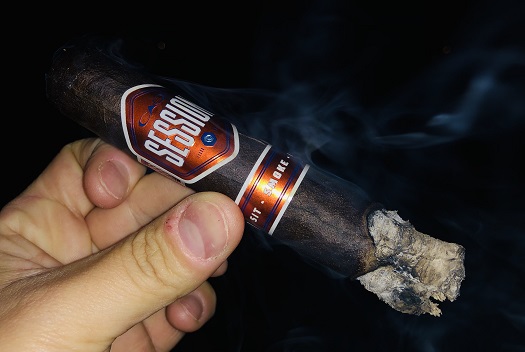
You won’t find too many details about Rick Rodriquez’s career on his LinkedIn profile. Basically, it says he has been at General Cigar since 1999, and the only role listed is “blender/ambassador.†Not exactly the kind of detail I was hoping for.
 General’s website thankfully has more information about Rodriguez. There, we can learn that he distinguished himself as a sales rep to the point where “General Cigar’s team of cigar masters unanimously selected Rick to participate in a rigorous cigar master training program†that brought him throughout the cigar world to learn about “tobacco agriculture, cultivation, aging, processing, cigar rolling, and ultimately, cigar blending.†Not a bad gig.
General’s website thankfully has more information about Rodriguez. There, we can learn that he distinguished himself as a sales rep to the point where “General Cigar’s team of cigar masters unanimously selected Rick to participate in a rigorous cigar master training program†that brought him throughout the cigar world to learn about “tobacco agriculture, cultivation, aging, processing, cigar rolling, and ultimately, cigar blending.†Not a bad gig.
Fifteen years ago, Rodriquez’s training brought him to Yuri Guillen, who is now manager of manufacturing at General Cigar Dominicana. “Since then, Ricky’s become an accomplished master blender, and he’s been all over the world sourcing the finest, most unique tobaccos for his CAO blends like Flathead, Amazon Basin, and many more of your favorites,†reads the CAO Session microsite. “With the new CAO Session, Ricky’s gone back to his roots, blending his new signature cigar in the Dominican Republic alongside Yuri and his original team.â€
Session, which shipped to retailers in early July, is a no-nonsense, everyday smoke inspired by the many cigars Rodriguez smoked in his garage. It is marketed as a medium-bodied, full-flavored stick for any occasion. The recipe includes a dark Connecticut Broadleaf wrapper, Dominican binder, and Dominican Piloto Cubano and Nicaraguan Estelà filler tobaccos.
There are three Session formats available, each packaged in 20-count boxes: Garage (5.25 x 54, $8.59), Bar (6 x 49, $8.99), and Shop (6 x 60, $9.59). They are handmade in the Dominican Republic and employ a “unique post-fermentation treatment [that] deepens Session’s flavor and darkens its color.â€
I sampled three CAO Sessions in the Garage format for this review. As with many Connecticut Broadleaf cigars, it is lumpy and toothy in appearance. The dark, thick wrapper has some noticeable veins and an oily sheen. The dual bands of orange, white, and dark blue—from the perspective of this Bears/Illini fan, a wonderful color scheme—loudly proclaim the blend and invite you to partake in a “session†of your own: “Sit. Smoke. Chill.†Rodriguez’s signature adorns the back.
The cold draw isn’t what I’d call tight but, for whatever reason, I find the Garage slightly more enjoyable if I clip the cap a little further down than I otherwise would.
Once lit, pre-light notes of raisin and damp earth transition to a full-bodied introductory profile of black pepper spice, leather, earth, and a faint sugary note. Sometimes I pick up a hint of citrus. Along the way, these same flavors come and go. At times the profile shines, at times it is muted. Nothing too complex. The final third is hot and somewhat bitter.
While the draw and smoke production are solid, the burn requires multiple touch-ups along the way to keep things burning evenly. As a result, the ash—while holding well—does not layer evenly. I found these physical attributes consistent across all three specimens.
While I certainly respect Rick Rodriquez and all he has accomplished, I think the CAO Session Garage leaves a lot to be desired. The combustion issues could certainly be overlooked if the flavor was consistently exciting. It is not, and that’s ultimately why I’m settling on a disappointing score of two and a half stogies out of five.

[To read more StogieGuys.com cigar reviews, please click here.]
–Patrick A
photo credit: Stogie Guys
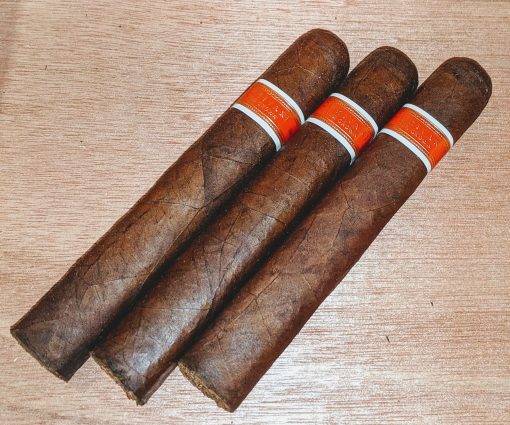


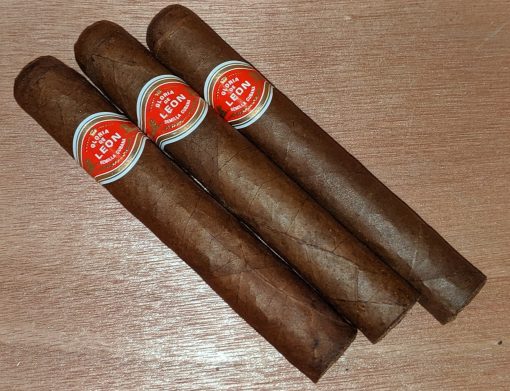
 Like other Curivari offerings, it is dominated by Nicaraguan tobacco. In this case, it’s a Nicaraguan puro with a Criollo wrapper surrounding a combination of Cuban-seed Criollo and Corojo tobaccos. It comes in three sizes: Fuerza (4.5 x 50), Dominante (5.25 x 54), and Prominente (6.75 x 54). I smoked three of the thick robusto-sized Dominante vitola for this review.
Like other Curivari offerings, it is dominated by Nicaraguan tobacco. In this case, it’s a Nicaraguan puro with a Criollo wrapper surrounding a combination of Cuban-seed Criollo and Corojo tobaccos. It comes in three sizes: Fuerza (4.5 x 50), Dominante (5.25 x 54), and Prominente (6.75 x 54). I smoked three of the thick robusto-sized Dominante vitola for this review.
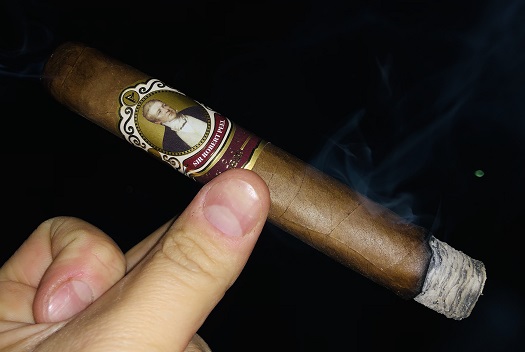
 Cancel and Ives launched the Cubariqueño Cigar Co. in 2015 with a nondescript table at Erik Espinosa’s booth at the IPCPR Trade Show in New Orleans. Back then, they were not entertaining delusions of grandeur. They set a goal to open 20 accounts and produced at one factory (Espinosa’s La Zona in EstelÃ). Before the show was over, they had sold out their inventory.
Cancel and Ives launched the Cubariqueño Cigar Co. in 2015 with a nondescript table at Erik Espinosa’s booth at the IPCPR Trade Show in New Orleans. Back then, they were not entertaining delusions of grandeur. They set a goal to open 20 accounts and produced at one factory (Espinosa’s La Zona in EstelÃ). Before the show was over, they had sold out their inventory.
 General’s
General’s 
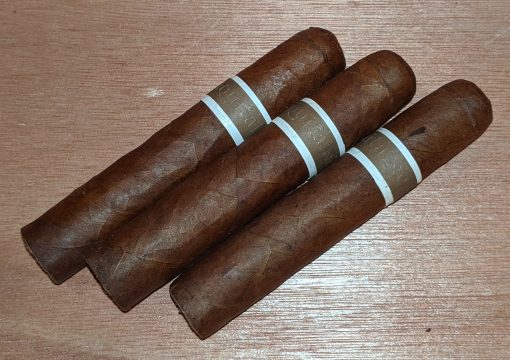

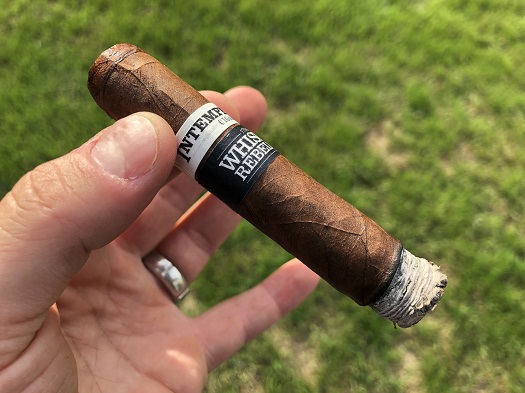
 Skip Martin of RoMa Craft Tobac is doing his part to draw cigar enthusiasts’ attention to the Whiskey Rebellion. You need look no further than a certain cigar in his Intemperance line—entirely fitting since Intemperance is an ode to everything the temperance movement was against (namely, booze).
Skip Martin of RoMa Craft Tobac is doing his part to draw cigar enthusiasts’ attention to the Whiskey Rebellion. You need look no further than a certain cigar in his Intemperance line—entirely fitting since Intemperance is an ode to everything the temperance movement was against (namely, booze).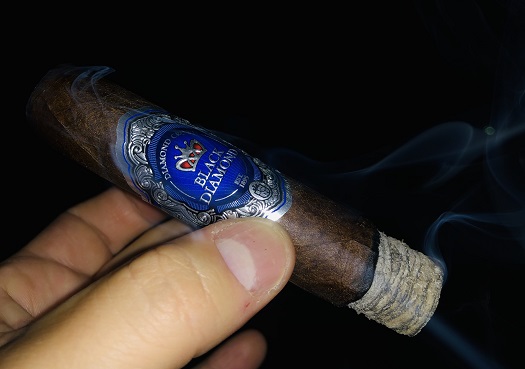
 With so much history—and given this industry’s proclivity to never let an anniversary pass without a new cigar—it’s no wonder J.C. Newman has a few milestone cigars. Diamond Crown, for example, while originally available in the 1940s and 1950s, was relaunched into the super-premium line you know today in 1995 to commemorate the company’s 100th anniversary. Later, in 2010,
With so much history—and given this industry’s proclivity to never let an anniversary pass without a new cigar—it’s no wonder J.C. Newman has a few milestone cigars. Diamond Crown, for example, while originally available in the 1940s and 1950s, was relaunched into the super-premium line you know today in 1995 to commemorate the company’s 100th anniversary. Later, in 2010,  Patrick Ashby
Co-Founder & Editor in Chief
Patrick Ashby
Co-Founder & Editor in Chief Patrick Semmens
Co-Founder & Publisher
Patrick Semmens
Co-Founder & Publisher George Edmonson
Tampa Bureau Chief
George Edmonson
Tampa Bureau Chief